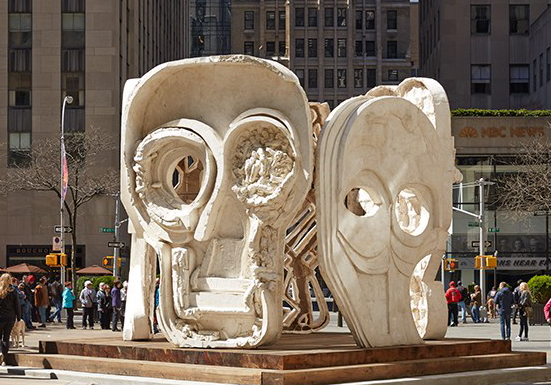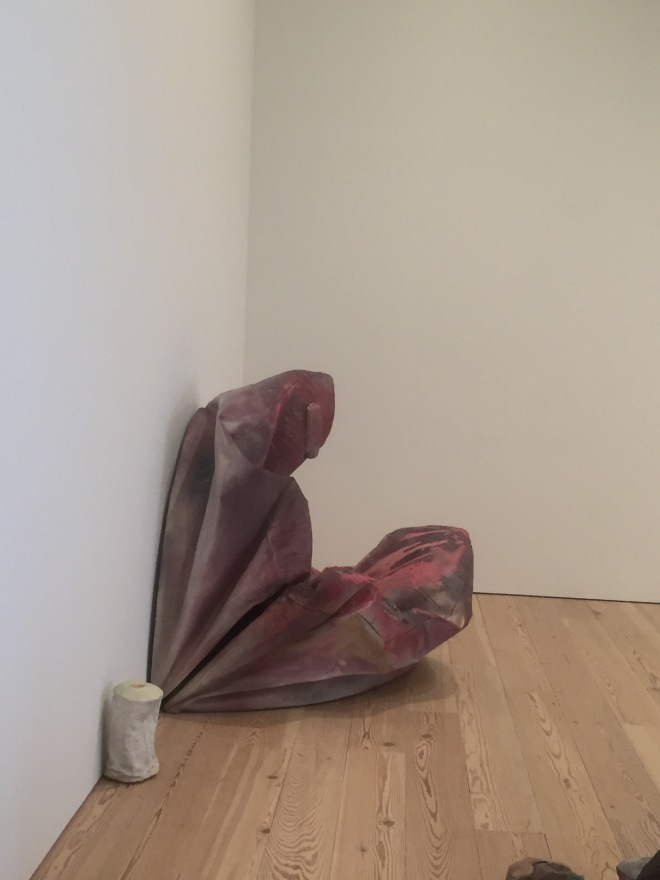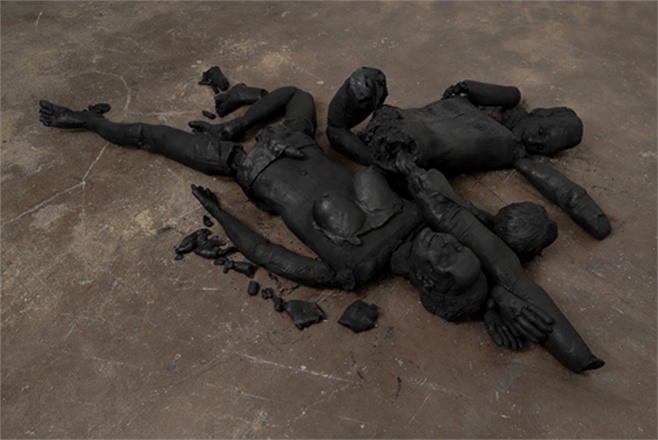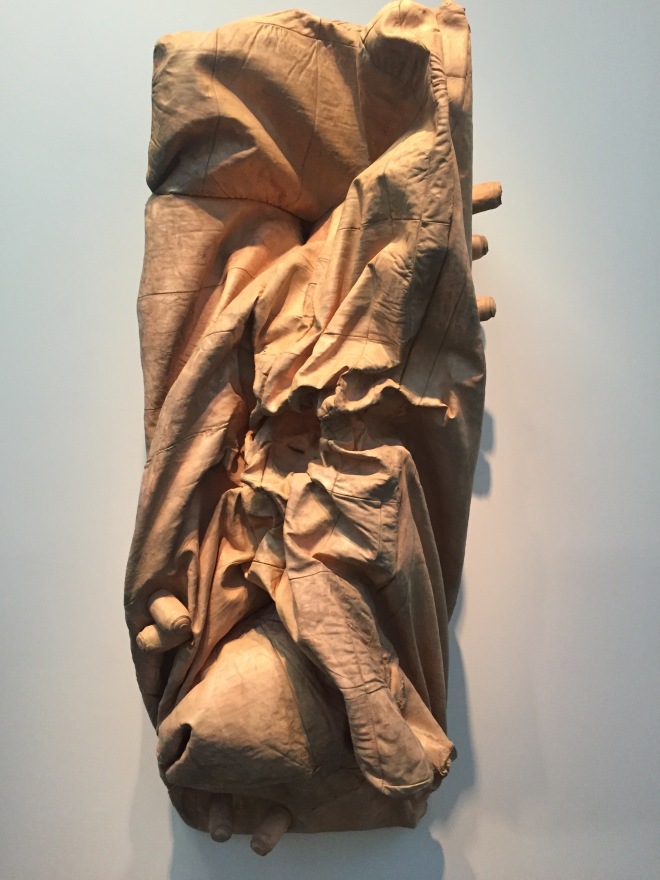Thomas Houseago is a fabulous, inventive sculptor and painter born in Leeds, England in 1972 and now living in California. The references in his work are from both continents but the scale is definitely American. Large scale, enormous and imposing figurative sculptures that seem ready to pounce or stride onto the viewer, sometimes terrifying but always with an aspect of vulnerability. However, these figures are not human. Elements of science fiction, death masks, ancient gods and warriors are melded together. And somehow, human feelings of hope, fear, anger, sadness emerge.

Thomas Houseago uses materials associated with classical sculpture such as wood, clay, plaster or bronze, as well as less traditional materials such as steel rods and concrete. He does not hide the artist’s hand. There is a strong sense of the handmade, the unfinished. Typical of his work is the combination of flat elements that almost appear to be cardboard with mask-like faces; large empty, hollow eyes and hand-drawn elements.
He has stated influences as wide as Picasso, Rodin, Henry Moore and Darth Vader or Nirvana. These influences fuse together into monstrous, mis-formed, mask like faces, asymmetric bodies with the various, disparate elements seemingly stuck or glued together that create a fascinating semi- abstract invader.


Houseago has said that he views movement as quintessential to sculpture. Part of the dilemma he has in thinking of a work is a desire that the sculpture as it takes up the viewer’s space must challenge his/her reality while being static. For him, sculpture is a monument to death that you deny by giving the sculpture movement, by having the sculpture either appear to be taking a step, ready to pounce or otherwise move into the viewer’s space. I think he is incredibly successful at filling his sculptures with kinetic energy. There is a tactile energy derived from the materials used, in particular the roughness of the plaster.


With the artist hand and the structure of the work so visible- those metal rods and wood posts, the viewer is reminded of the impermanence of time, the vulnerability of the body, the importance of the skeleton as your backbone- maintaining you upright, the inevitability of death. He is telling a story about how the sculpture is made or makes itself. A sculpture is a fragmented body, accidents in the making reveal a new meaning.

In more recent years, Houseago has moved away from sculpture as monument to focusing more on masks, with the mask abstracts becoming plinths, gates, spoons, coins. These sculptures then have further evolved into walls or rooms that force the viewer into a physical and social interaction with the work.

“Masks (Pentagon),” a public art piece that was installed in New York consisted of five sculptures of faces — some more than 16 feet tall — crafted from a ghostly white industrial-strength synthetic plaster. Visitors could enter the piece and see the world from the eyes of these gargantuan figures.

Photo from Public Art Fund
Moun Room is an immersive environment. From the Hauser and Wirth write up of the show: “Measuring approximately 37 feet by 45 feet wide, and 12 feet tall, ‘Moun Room’ is comprised of three chambers contained within one another. The spaces Houseago has conceived with ‘Moun Room’ – extending both within and outside the structure’s physical walls – invite meditation upon movement and codes of behavior in response to architecture. The artist has described this work as ‘a visual maze with a spiritual dimension’. I can state it was a fascinating world to enter.

Although he is definitely best know for his sculptures, Houseago has also made paintings, in particular a series called the Black paintings which have the same structure and contrast as his mask sculptures and remind me somewhat of the masks in Basquiat paintings.

Gallery : Gagosian, Xavier Hufkens, Hauser and Wirth








